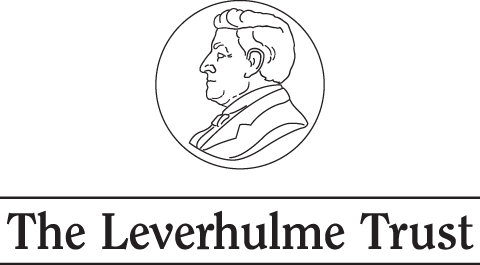 Angelos Sikelianos (1884-1951) – poet, playwright, and political animal – was a pivotal presence in the first half of the 20th century in Greece. Born on the island of Lefkada, Sikelianos travelled widely through Greece and Europe, expounding his message, and proclaiming the superiority of ancient Greek civilisation, and the need for the “Delphic Idea” to enlighten the world around him.
Angelos Sikelianos (1884-1951) – poet, playwright, and political animal – was a pivotal presence in the first half of the 20th century in Greece. Born on the island of Lefkada, Sikelianos travelled widely through Greece and Europe, expounding his message, and proclaiming the superiority of ancient Greek civilisation, and the need for the “Delphic Idea” to enlighten the world around him.
The “Delphic Idea” was an ideal conceived by Angelos (with plentiful help from Eva Palmer Sikelianos, his first wife, although he did not acknowledge this later on).[1] This ideal proclaimed that the tools to transform the world into a spiritual and intellectual ideal lay in the ancient Greek past, and particularly in its tragic art, and he sought to encourage the foundation of an international community around this concept.[2] As part of this, he and Eva organised the 1927 Delphic Festival Revival, which invited intellectuals and personalities from all over the world to come together in a day of theatrical performances, competitions, and Pyrrhic dances.[3] The Festival was revived once more in 1930, but, as the couple were financing the events themselves – or, rather, Eva’s inheritance was – they soon ran out of money, and the project was abandoned.[4]
Despite this strong international involvement, Sikelianos was not truly political in the traditional sense of the word until 1940, when Mussolini’s Fascist troops lurked outside of Greece’s borders, keen to force their way in.[5] In response to Mussolini’s threats, Sikelianos wrote Sibylla (1940), a tragedy that dramatizes the visit of Emperor Nero to the Temple at Delphi to take prophecy from the Sibyl. Through the mytho-historical tale, Sikelianos presses the impending Italian invasion, showing Nero a despot (much like Mussolini) oppressing the Greek peoples, and offering a rousing call at the end of the play towards “The Right Purpose” – towards action against tyrannical forces, against irredentism, and against fascism (on both a specifically Italian and international scale):[6]
The Nation, immersed in this age,
can be redeemed.
But great Memory must wake up
deep within it, unconquered, fearsome!
No one will escape his generation!
Its weight will be born until that time when,
escaping from oblivion
into the light, there is no more hesitation.
So he will put on life’s armour
and, for the sacred bodies of those
already passed, he will stand on his land,
head unbent, head upright![7]
After the Greco-Italian War (1940-1941) crashed to an end with the Nazi invasion (April 1941), and then devolved into the brutal three-year Axis Occupation (1941-1944), Sikelianos became involved with the Communist Party of Greece (KKE). The KKE essentially ran the main resistance movement against the Axis – EAM – and Sikelianos, after joining the cultural wing, wrote a number of resistance poems which he collected under the title Akritika, or Akritan Songs (1942). A number of these poems concern ancient themes, one referencing Solon and another Dionysus, and they were circulated clandestinely through the resistance, before being smuggled to America where Eva Palmer, now Sikelianos’ ex-wife, ensured their translation and publication.[8] Still writing for the communist-led resistance, he moved to Aegina for a summer to live alongside his estranged friend, Nikos Kazantzakis, fellow author.[9] While there, he wrote Daedalus in Crete (1943), another tragedy which takes the Minoan mythic cycle and shows Minos, a tyrant, revolted against by Daedalus, the revolutionary leader of Theseus’ group of Athenians. This play once again agitates against fascism and tyranny, pushing forward a revolutionary and communist-aligned agenda.[10]
His activism on behalf of EAM was not solely confined to his literature, though. In 1943, he was a pallbearer at the funeral of Kostis Palamas, a Greek national poet.[11] At the funeral, he made a rousing speech, recited a poem written especially for the occasion, and led the crowd in the (banned) Greek national anthem right before the nose of the Axis authorities. He also composed a number of public letters, both during the Axis occupation (for the protection of Greek Jews) and after, during the early stages of the Greek Civil War (1944-1947) (in protest against the “White Terror” and the murder of Leftists by far-right government forces).[12]
In the atmosphere of late 1940s and early 1950s Greece, Sikelianos was persecuted for his involvement with EAM, heavily suspect to the Right, who now dominated the country. In 1951, he passed away in Athens after an accident with his medication, and was buried in the First Cemetery of Athens, where Anna Sikelianou later joined him. He remains a deeply influential figure in Greek letters, and his defined poetic vision continues to entrance even decades after his death.
![]() This profile was written by Anna Coopey
This profile was written by Anna Coopey
[1] For more on Eva Palmer Sikelianos, who has been largely devalued and ignored in discussion of Angelos’ own work, see Artemis Leontis (2019): Eva Palmer Sikelianos: A Life in Ruins (Princeton University Press).
[2] For Sikelianos’ specific writing on the “Delphic Ideal”, see Angelos Sikelianos (trans. D. Connolly) (2023): The Delphic Endeavour (Ίκαρος).
[3] For more on the Delphic Festivals, see Gonda Van Steen (2002): “‘The World’s A Circular Stage’: Aeschylean Tragedy through the Eyes of Eva Palmer-Sikelianos” (pp. 375-393) from International Journal of the Classical Tradition, Vol. 8 (Springer), and Jennifer Ballengee (2024): “Art and Politics: Prometheus Bound and the Delphic Festivals” (pp. 31-66) from Classical World, Vol. 118 (Johns Hopkins University Press).
[4] The European Cultural Centre of Delphi has since bought Angelos and Eva’s house at Delphi, which has been turned into a museum in honour of the festivals.
[5] On this sudden political turn, see Anna Razou (2021): “Ο Σικελιανός στον Μεοσπόλεμο” from Λευκαδίτικα – https://www.kolivas.de/archives/407805 (accessed 01-05-2025, 11:14).
[6] For more on Sibylla, see: Marika Georgopoulos (1968): “Les Sources Historiques et Littéraires de la “Sibylla » de Sikélianos” (pp. 245-260) from Revue des Etudes Neo-Helleniques, Vol. 1 (Conaissance Hellenique); M. Simondon (1980): “Une Tragédie Allégorique, La Sibylle de Sikelianos” (pp. 93-102) from Duchemin, J. (ed.) (1980): Mythe et Personnification: Actes du Colloque du Grand Palais (7-8 Mai 1977) (Société d’Édition “Les Belles Lettres”); and Georgia Ladogianni (2001): “Άγγελου Σικελιανού Σίβυλλα: Μύθος και Ιστορία στην Αναγέννηση της Τραγωδίας” (pp. 155-177) from Επετηρίδα Φιλολογίας, Vol. 30 (Πανεπιστήμιο Ιωαννίνων, Φιλοσοφική Σχολή, Τμήμα Φιλολογίας).
[7] Translation Anna Coopey (2025).
[8] Eva and Angelos had split amicably in 1934, and Sikelianos married Anna Karamani in 1940. Artemis Leontis (2019) has believably argued that Eva may well have translated the poems herself, and not “Paul Nord” (or Nikos Nikolaidis).
[9] The pair had met in November 1914, in an encounter Kazantzakis later described as a coup de foudre, “love at first sight”. After years sporadically living together and travelling together, they fell out in the 1920s: Kazantzakis, intrigued by revolutionary communism, had grown apart from Sikelianos, who at this point was more focused on Greek nationalism, and less enamoured with traditional politics. The two had agreed to travel to the USSR together, in 1921, yet Sikelianos backed out, and Kazantzakis travelled to Russia alone. Later, though, in 1945, both were instrumental to the founding of the Greek-Soviet Friendship Union, showing clearly that Sikelianos had become more political – and more “communist” – during World War Two. For more on their friendship, see Pandelis Prevelakis (trans. K. Friar) (1983): “Kazantzakis-Sikelianos: The Chronicle of a Friendship” (pp. 5-20) from Journal of the Hellenic Diaspora, Vol. 10, Special Issue: Nikos Kazantzakis (Pella Publishing Company).
[10] For more on Daedalus in Crete, see Růžena Dostálová (1968): “Antike Themen im Dramatischen Werk Des Neugriechischen Dichters Angelos Sikelianos” (pp. 321-330) from Burian, J. (1968): Antiquitas Graeco-Romana ac Tempora Nostra, Acta Congressus Internationalis Habiti Brunae Diebus 12-16 Mensis Aprilis MCMLXVI (Academia Publishing); and Peter Bien (2007): “Prometheus Trilogy and Greekness” (pp. 165-196) from Bien, P. (2007): Nikos Kazantzakis: Politics of the Spirit, Volume Two (Princeton University Press).
[11] For more on the funeral, which was a prominent event in the national resistance in Greece, see Mark Mazower (1993): Inside Hitler’s Greece: The Experience of Occupation, 1941-44 (Yale University Press), p. 117-118.
[12] For more on the “White Terror” in Greece, and the early Greek Civil War, see: Polymeris Voglis (2002): “Political Prisoners in the Greek Civil War, 1945-50: Greece in Comparative Perspective” (pp. 523-540) from Journal of Contemporary History, Vol. 37 (Sage Publications); and Stathis N. Kalybas & Nikos Marantzidis (2016): Εμφύλια Πάθη: 23 + 2 Ερωτήσεις και Απαντήσεις για τον Εμφύλιο (Μεταίχμιο).



